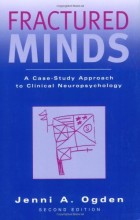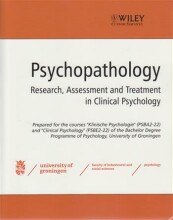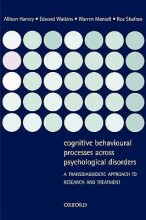Summary: Fractured Minds : A Case-Study Approach To Clinical Neuropsychology | 9780195171365 | Jenni A Ogden
- This + 400k other summaries
- A unique study and practice tool
- Never study anything twice again
- Get the grades you hope for
- 100% sure, 100% understanding
Read the summary and the most important questions on Fractured minds : a case-study approach to clinical neuropsychology | 9780195171365 | Jenni A. Ogden.
-
1 Introduction to Clinical Neuropsychology
This is a preview. There are 23 more flashcards available for chapter 1
Show more cards here -
Gross structure of the brain
Three major divisions- Cerebral hemispheres- paired structures at the base of the cerebral hemispheres and are concerned mainly with motor coordination, muscle tone and balance
- Cerebellum
- Brain stem - medulla oblongata, pons, midbrain and diencephalon
-
Secondary zones (association cortex)
The neurons in these zones, unlike those in the primary zones, do not have direct topographic relationship with sensory information relayed from a particular body part or sense organ. Instead they receive the modality-specific information from their primary cortex and integrate it into meaningful wholes. -
Tertiary zones (prefrontal cortex)
Inner borders of each lobe. At this level, modality specificty disappears, and integration of information across sense modalities occurs. Has links with the limbic system (involved in emotion and memory). -
Diffuse brain damage
Damage that affects many areas of the brain, as in AD or other dementia's -
2 The neuropsychological assessment
This is a preview. There are 5 more flashcards available for chapter 2
Show more cards here -
(quantitative method)Halstead-Reitan Battery pitfalls
Does not allow for individual differences in brain-behavior relations and considerably restricts the possible interpretations. Deficits may be missed because there is no test that covered it. Or time can be wasted assessing many functions that are clearly intact -
4 Out of Control: The consequences and treatment of Epilepsy
This is a preview. There are 12 more flashcards available for chapter 4
Show more cards here -
Generalized tonic-clonic seizures (grand mal seizures)
victim often cries out and is overtaken by tonic muscular contractions in which the limbs are rigidly extended for about a minute, followed by a clonic phase in which the muscles stiffen and relax, causing the limbs to jerk rapidly at first and then more slowly. -
Absence seizures (petit mal seizures)
Sudden transient lapse of consciousness, often barely perceptible to an observer -
Akinetic seizures (drop attacks)
Sudden loss of postural tone so that the person slumps or falls to the floor -
5 The breakdown of language: Case studies of aphasia
This is a preview. There are 16 more flashcards available for chapter 5
Show more cards here -
Transcortical motor aphasia
Halting, nonfluent speech, but unimpaired, fluent repetition of sentences. Comprehension is unimpaired -
7 Out of mind, out of sight: A case of hemineglect
This is a preview. There are 9 more flashcards available for chapter 7
Show more cards here -
Hemineglect/ Hemispatial neglect/ Unilateral spatial neglect/ Unilateral inattention
This impairment quite commonly follows focal damage to one hemisphere of the brain in humans (and also in monkeys and cats) The main symptom is an apparent unawareness or unresponsiveness to stimuli in the side opposite the brain damage. Most severe cases mostly follow right-hemisphere lesions.
- Higher grades + faster learning
- Never study anything twice
- 100% sure, 100% understanding

































